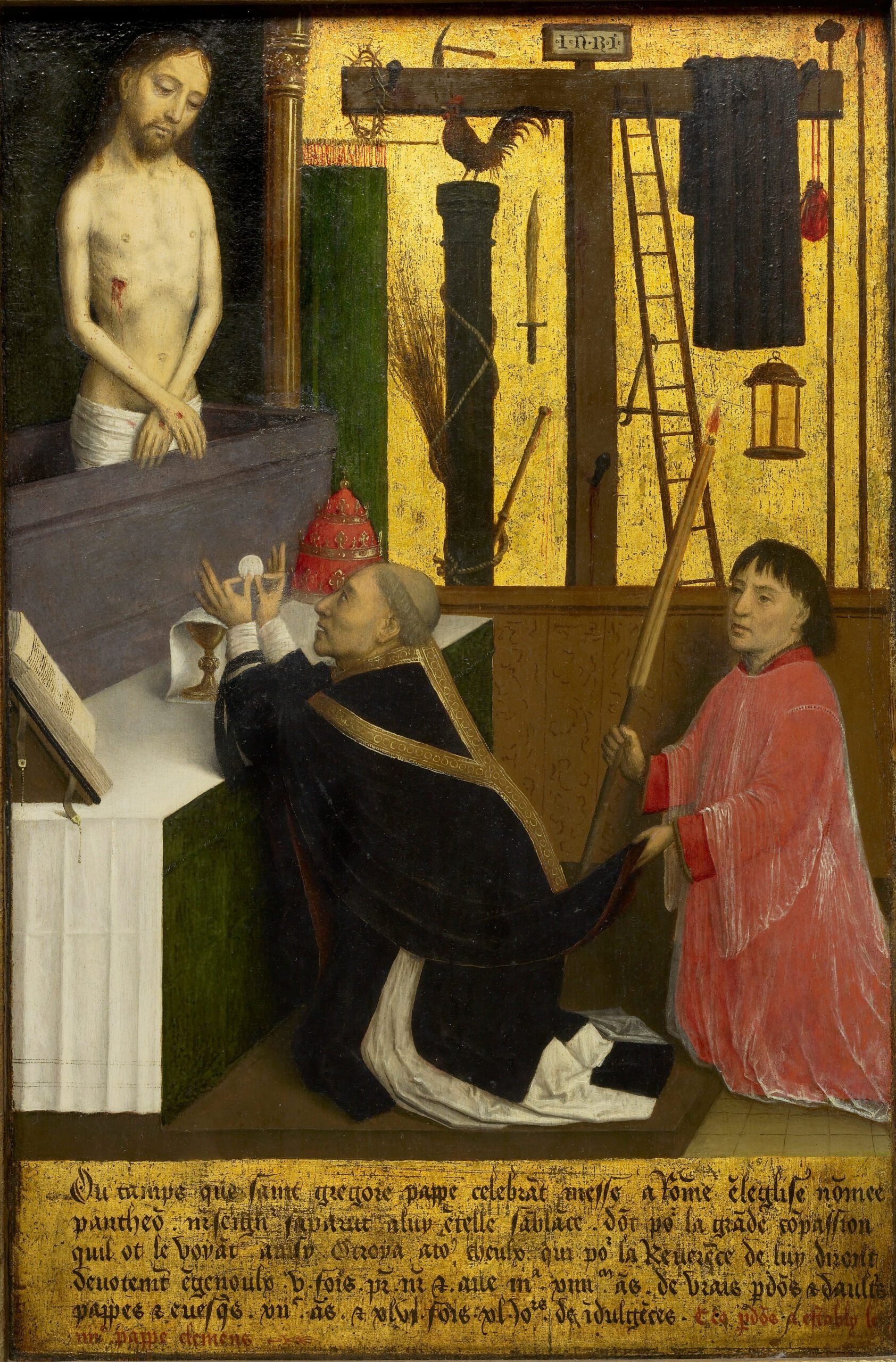
What sign are you going to give us then?
‘You are looking for me, not because you saw signs, but because you ate your fill of the loaves’. Jesus’ disciples remember the sign, but quickly forget what it signified. The sacraments are efficacious signs. For us who depend on them, we are more at risk of the reverse problem: forgetting that they are indeed signs.

Readings at Mass: John 6:44-51
This homily was preached to the student brothers at compline. You can listen here or read below:
We’re currently coming towards the end of the sixth chapter of John’s Gospel. It begins, as you will recall, with Jesus feeding the 5000, and it ends, as we shall read on Saturday, with many of his disciples departing from him, being unable to bear his teaching that they must truly eat his flesh and drink his blood if they would have eternal life. I would like to pick up on one aspect of what has gone wrong here and it’s something that may even go wrong for a faithful Catholic who doesn’t doubt for a moment the real presence of Christ in the Eucharist. What I’m talking about is our use of signs.
The 5000 had gathered ‘because they saw the signs that he was doing for the sick’, and afterwards this crowd tried to ‘take him by force to make him king’. Why? Again, because they ‘saw the sign that he had done’. Reading on further, the multitude reconvenes with our Lord on the other side of the lake. Yet, far from being touched by their apparent devotion, he issues the gentle reprimand: ‘You are looking for me, not because you saw signs, but because you ate your fill of the loaves’. Two problems can be detected. Firstly, a faulty or incomplete identification of the signified: the miracle seemed to suggest divine sanction, not God himself among them. Secondly, forgetfulness; in short order, the signified is forgotten in favour of the sign. Or alternatively we might say, the physical, corporeal is remembered and the spiritual forgotten. Of course, Christ is proved right: as soon as he demands that they believe in him, the one God has sent, they ask for a sign – as if they had yet to see anything.
That brings me to today’s passage. Our blessed Lord seems to offer us two ways to eternal life: ‘Whoever believes has eternal life’, and ‘I am the bread of life… Whoever eats of this bread will live for ever’. We know of course that behind this two-fold instrumentality is one way. If we hadn’t picked up the proliferation of first-person pronouns in the bread of life discourse, then he in any case states it plainly later: ‘I am the way, and the truth, and the life. No one comes to the Father except through me’ (Jn 14:6). Faith and the sacraments are thus the two means, to be sure interdependent means – sacraments both require faith and perfect it – by which we are put in contact with Christ.
So, what can go wrong in our relationship to the sacraments? In our case, although I suppose we might misread the sign, or downplay its richness, it is more likely that we will succumb to a kind of forgetfulness. At times when we are consoled by the sacraments, it can be easy to attend to them as efficacious signs, as vehicles of interior graces. Or, when we are in desolation, we may cling to their comforting physical presence, in order that we might once again encounter their spiritual effects. This is commendable. Christ’s true body under the sacramental veil is a means of grace for us now, or equally, and absolutely in accord with Christ’s words, a means to eternal life. Yet still the most obvious signification remains. As St Thomas’ Magnificat antiphon for Corpus Christi helpfully summarises: O sacred banquet, in which Christ is received, the memory of His Passion is renewed, the mind is filled with grace, and a pledge of future glory is given to us. Present and future; grace and glory, certainly, but past, too. The power of all the sacraments, and the Eucharist most manifestly, flows from Christ’s passion.
We have passed through a long Lent. Is Eastertide not the time to look towards the joy of risen, glorified life? Yes, but the waters of life stream from the pierced side of Christ. He appears to the disciples, and shows them his wounds. One can’t help thinking of the story of St Teresa of Avila and her vision of the devil: the only way she could distinguish him from the Lord is because he appeared without wounds. Or again, think of Nicodemus, who after learning of baptismal rebirth by water and the spirit, is instructed by Christ: “as Moses lifted up the serpent in the wilderness, so must the Son of Man be lifted up.”
A sign “is that which, besides the impression it makes on the senses, puts one in mind of something else”. Let us then approach the Holy Eucharist with our hearts and minds intently fixed on our beloved Lord who in his sacrifice on the Cross revealed to us the immensity of the divine love: “For God so loved the world that he gave his only Son’’. If we do so, then eating the Lord’s flesh and drinking his blood will indeed lead us, by way of the Cross, to the glory of eternal life, our whole lives ever more perfectly conformed to that pattern of self-sacrificing love.


